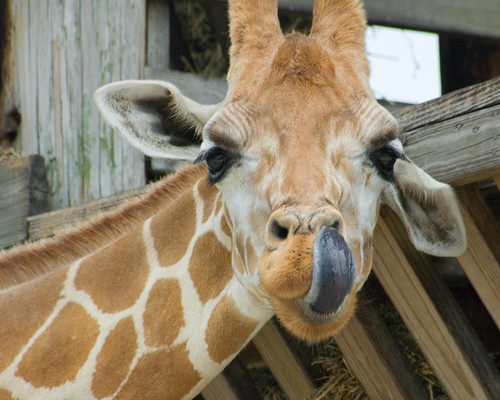Wrapping Up Our Adventures With Giraffes
To finish off our blog on giraffes we visited the giraffe exhibit at the San Diego Zoo. We had a great time taking pictures and observing these beautiful animals!
The giraffe in the background of the two above photos is one of the baby giraffes currently at the zoo. She is only a year old and look how tall she is!
Our fun fact of the week came from one of the workers at the zoo. She said that people always wonder why don't the giraffes don't just step over the short wall that is keeping them in? The reason for this is because on the other side of the wall there is a 3 foot deep moat. Surprisingly giraffes don't like to step down more than 6 inches and because they would need to step down into this 3 foot deep moat to cross the wall makes the task seem to risky so they don't even attempt to escape.
At the zoo the giraffes eat from tall tree like structures and also from bins that contain their favorite food...acacia trees!
The picture above is of the only male giraffe at the zoo. His name is Silver. If you look closely at his coat pattern you can see that he is a Masai giraffe based on the distinct color and pattern.
And this is us say so long to our giraffe friends at the zoo!! Thank you everyone for reading our blog. We hope you enjoyed learning about giraffes just as much as we did!









